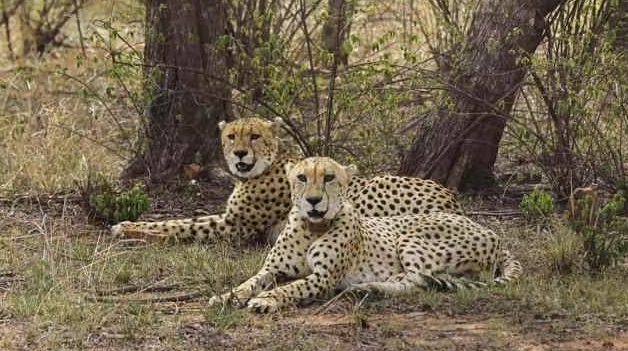Reintroducing Cheetahs to Gandhi Sagar Sanctuary (GS Paper 3, Environment)

Introduction
- India's ambitious project to reintroduce cheetahs into the wild after a hiatus of 70 years is centered around the Gandhi Sagar Wildlife Sanctuary in Madhya Pradesh.
- This endeavor is not just about bringing back a charismatic species but also about revitalizing ecosystems and promoting biodiversity conservation in the region.
Habitat Suitability
- The Gandhi Sagar Sanctuary covers a vast expanse of 368.62 square kilometers, encompassing a variety of landscapes that are ideal for cheetahs.
- From expansive savanna-like grasslands to rugged, rocky plateaus and meandering river valleys, the sanctuary provides a mosaic of habitats crucial for cheetahs' natural behaviors.
- These habitats offer ample space for the cheetahs to roam, hunt, and establish territories, mirroring their native environments in Africa.
Conservation Objectives
- The primary goal of reintroducing cheetahs to Gandhi Sagar is to restore ecological balance and enhance biodiversity.
- Cheetahs, as apex predators, play a crucial role in regulating prey populations such as chital (spotted deer), blackbuck, and chinkara (Indian gazelle).
- By reintroducing cheetahs, the project aims to curb overpopulation of these herbivores, thereby preventing habitat degradation and promoting healthier ecosystems.
Preparation and Facilities
- Extensive preparations have been made to ensure the successful reintroduction of cheetahs.
- A dedicated area of 64 square kilometers has been set aside within the sanctuary, equipped with a soft-release cage.
- This facility allows newly introduced cheetahs to acclimate to their surroundings gradually before being fully released into the wild.
- Additionally, a specialized wildlife hospital has been established to provide veterinary care and address the unique health needs of cheetahs, ensuring their well-being in their new environment.
Challenges and Mitigation
- Several challenges, such as ensuring sufficient food supply for the cheetahs and managing potential conflicts with local communities, have been identified and addressed proactively.
- Efforts include relocating herbivore populations to areas within the sanctuary and collaborating closely with neighboring reserves like Bhainsrodgarh to coordinate ecosystem management effectively.
- These measures are aimed at minimizing human-wildlife conflicts and ensuring the long-term sustainability of the cheetah population in Gandhi Sagar Sanctuary.
Global Conservation Impact
- The reintroduction of cheetahs to Gandhi Sagar Sanctuary is not just a local conservation effort but also contributes to global biodiversity conservation goals.
- Collaborations with international experts and adherence to guidelines set by organizations like the International Union for Conservation of Nature (IUCN) ensure that the project follows best practices in wildlife reintroduction and management.
- The ultimate aim is to establish a self-sustaining cheetah population, with a target of 50 cheetahs to be born over five years, thus securing the species' future and enhancing biodiversity on a global scale.
Conclusion
- Reintroducing cheetahs to Gandhi Sagar Sanctuary represents a significant milestone in India's conservation journey.
- Beyond restoring a missing component of India's natural heritage, this initiative promises to rejuvenate ecosystems, support sustainable tourism, and safeguard biodiversity for future generations.
- By balancing ecological restoration with community engagement and international collaboration, India sets a precedent for holistic wildlife conservation efforts worldwide.


